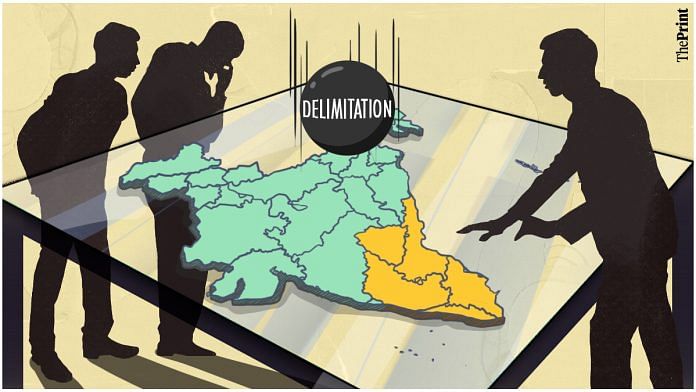Back in 1981, four southern states (Andhra Pradesh, Karnataka, Kerala, and Tamil Nadu) accounted for a little more than a fifth of national economic activity. The four are now five, with Telangana having been carved out of Andhra Pradesh. And their current share of economic activity has increased by well over a third to 30 percent.
That the South has done better than other regions is generally acknowledged, how much better may come as a surprise to many.
The southern states also have a better record of population control, hence fewer people share their bigger slice of the pie than would have been the case if the population had grown at, say, the rate in Bihar or Uttar Pradesh.
The combination of faster economic growth and slower population growth has translated into a southern income per head that is between twice and five times what it is in poorer states elsewhere.
Indeed, the south does better than even Maharashtra and Gujarat. But the difference is most stark when you compare Bihar with Karnataka, the latter has more than five times the former’s per capita income. The multiple for Telangana over Uttar Pradesh is four times, and for Kerala over Assam twice. Ditto with Tamil Nadu over West Bengal.
With better incomes come superior socio-economic characteristics.
Life expectancy in the South is more than elsewhere, the literacy rate too is noticeably better, and the southern woman gives birth to one child less than her northern counterpart.
Indeed, fertility has fallen below the replacement rate of two births per woman in at least two states, so in due course the southern population could start shrinking while that north of the Godavari (a better marker of the divide than the usual reference point, the Narmada) continues to grow.
These imbalances create others, like tax revenue raised by the state. Jharkhand, which has the same population as Kerala, has less than half its own tax revenue. Ditto with Madhya Pradesh compared to Tamil Nadu.
This imbalance in fiscal firepower is partly corrected through central transfers — the southern five contribute about a quarter of the revenue from the central goods and services tax (GST), for instance, but their share of total central transfers to states is less than a sixth.
This is as it should be, for without a disproportionate transfer of central resources, the poorer states will fall further behind. The southern states have not complained. But even with skewed transfers, the gap remains a chasm.
When it comes to private-sector investment in sunrise sectors like solar panels, electric vehicles, mobile phones, and electronic components, the story is a repeat of tech services — much of the business goes south, and most of the rest to the two western giants of Maharashtra and Gujarat.
All that the people from the depressed east can do is migrate west and south in the tens of millions, as a worker under-class.
Also read: Though gaining prominence among middle-rung global powers, India has work to do to climb further up
This is the backdrop against which to view recent references to the next census and subsequently a fresh state-wise allocation of parliamentary seats, or delimitation.
Today, the southern states have close to a quarter of the seats, but only about a fifth of the population. That will change after delimitation, and the South may get very few of the couple of hundred new Lok Sabha seats that get created.
Besides, a Lok Sabha more heavily dominated by the most populous states in the north, with their poor socio-economic metrics, may herald a different kind of politics. For instance, on language policy.
Southern voices have already been raised in protest against being penalised for demographic success. Existing issues which have not provoked protest so far (like sending southern tax money north and east) could become grievances.
Since much of the south is ruled by regional parties, the national and northern parties may ignore southern protests, but a party-wise divide that neatly overlays geographical, economic, linguistic, and socio-political (e.g. Hindutva vs regional identity) demarcations carries risk.
The government would be well advised to pre-emptively make placatory offers, like greater regional autonomy or an unchanged Rajya Sabha. In turn, the southern states must see that they need the northern market.
By special arrangement with Business Standard.
Also read: Human-centric, but also GDP-centric. What Indian govts need to keep in mind on expenditures



